Understanding Coffee Roast Profiles To Enhance Flavour
If you’ve ever wondered why your morning cup of coffee sometimes tastes bright and fruity while other times it comes across as deep and chocolatey, the answer often comes down to roast profiles. Roast profiles play a big role when it comes to giving a boost to the flavour of your coffee, whether you brew at home or order from your favorite café. Knowing what goes into different roast profiles makes it a lot easier to pick a coffee that matches your taste, so I’m breaking things down in a way that’s easy to follow.
What Is a Coffee Roast Profile?
The roast profile is like the DNA of your coffee’s flavour. It covers how the beans are roasted, including how hot, how long, and at what rate they’re heated up. Every variable, from the moment the beans hit the roaster to when they cool down, impacts how your coffee will taste.
Even small changes during roasting, like increasing the temperature by a few degrees or shortening the total roast time, can mix up the flavors you experience. This is why the same “origin” (where the coffee comes from) can taste really different when roasted by two different people or companies.
For a super detailed look at the differences between roast types, you can check out this guide: Light Roast vs Dark Roast Coffee.
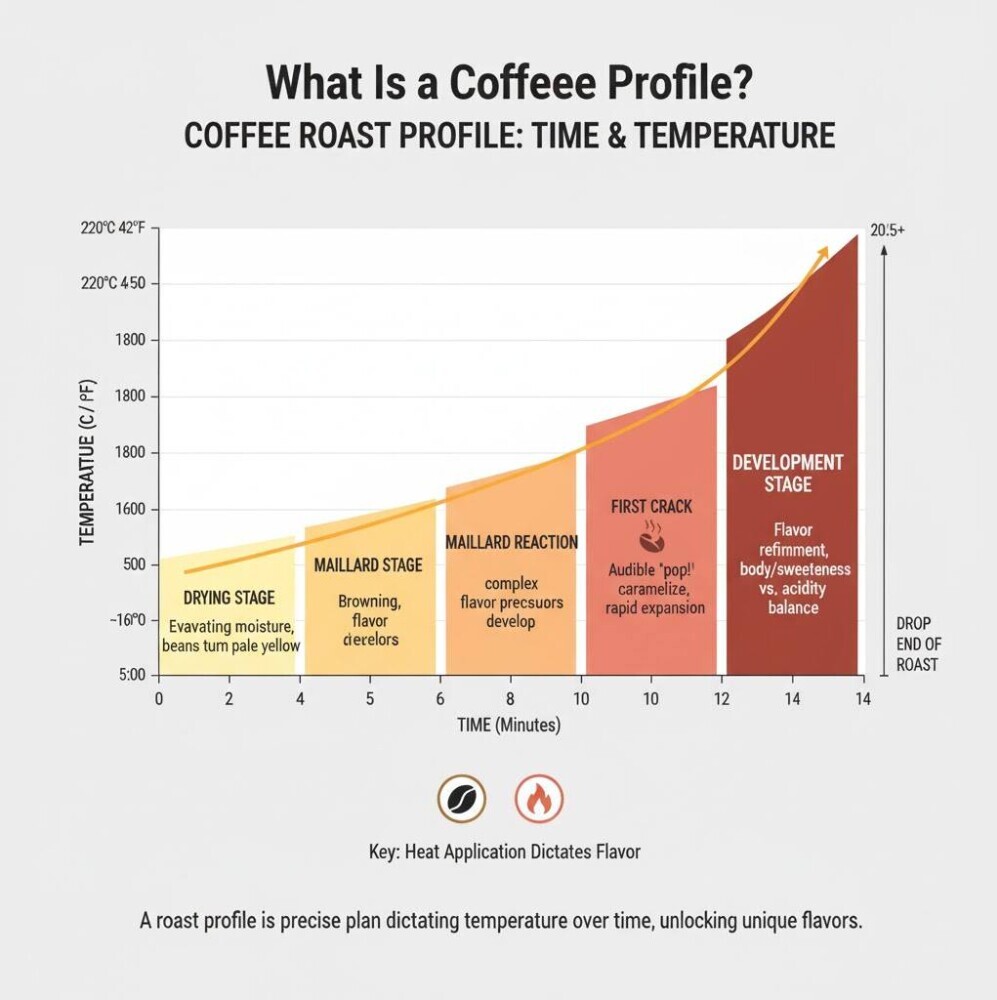
Major Coffee Roast Levels and What They Taste Like
Roast profiles usually fall into three big categories: light, medium, and dark. Here’s how each level affects your coffee flavor:
- Light Roasts: These beans are roasted for the shortest time at lower temperatures. They tend to have more of the beans’ original flavours, so you’ll notice lots of fruity, floral, or citrus-like notes and higher acidity. If you love those brighter, tea likely cups, light roast could be up your alley. JOJO is one of my favorites here, super juicy, sweet, and lively.
- Medium Roasts: A solid middle ground, medium roasts are balanced. Some natural origin qualities but also a little bit of those classic toasty, caramel, or nutty flavours. The body (how heavy the coffee feels in your mouth) is usually more noticeable too.
- Dark Roasts: Roasted longer and at higher heat, dark roasts have bold flavours, more bitterness, and much more roast driven character. Think chocolate, spices, or even a smoky vibe. Lower acidity, thicker mouthfeel, and sometimes a little oil on the beans. If you want a warm, comforting cup, dark roast (like the Little Robot Blend) is worth checking out.
Getting Started With Taste: Coffee Roast and Flavour Basics
When I first got into coffee, I kept hearing about acidity, body, and balance. Here’s what those really mean in the context of roast profiles:
- Acidity: Mainly comes through with light roasts where roasting less brings out those apple, citrus, or berry flavours. This is usually described as a pleasant tang and is often what coffee pros rave about.
- Body: Coffee’s “weight” on the tongue. Darker roasts and medium roasts often feel fuller, sometimes almost creamy. Lighter roasts taste thinner but are usually more crisp and refreshing.
- Balance: How the acidity, body, sweetness, and bitterness all work together in your cup. Most roasters aim for a balance that leaves no one flavor sticking out in a weird way.
At the end of the day, there’s no “right” or “wrong” profile. A lot of it comes down to your personal favourites.
Building a Roast Profile: The Main Variables at Play
The process of roasting is more than just turning green beans brown. Here are a few of the big steps that influence the final taste:
- Charge Temperature: How hot the roaster is when the beans go in. A hotter charge gives the beans an energetic start, often leading to more intense or pronounced flavours.
- Development Time: The stage after “first crack” (when beans pop, kind of like popcorn). Longer development brings out deeper, darker flavours; shorter times preserve more of the bean’s origin character.
- Rate of Rise: How quickly the temperature increases during roasting. Controlled, even “climbs” get more consistent, flavourful results. Too fast, and the beans might taste harsh or burnt; too slow, and they can come out flat or baked.
- Finish Temperature: When the roast is stopped and cooled down. Higher finish means darker beans and more roasted or bitter flavours, while a lower finish usually keeps things brighter.
If you’re interested in getting into home roasting, there are plenty of online resources and starter kits available that can help you take your coffee adventures to the next stage. Experimenting with home roasting lets you tweak variables and see how each change impacts the flavour in your cup, making you appreciate the skill behind every bag of beans.
Roast Profile and Brewing Method: Finding the Right Match
Certain roast profiles pair up really well with specific brew methods. Here’s how I like to match them:
- Light Roasts: I love these in a pour over or AeroPress. Methods that highlight clarity and complexity tend to show off the unique flavours better. For espresso, light roasts can be tricky, sometimes sour or sharp unless dialed in carefully.
- Medium Roasts: These are flexible for drip, pour over, French press, or even espresso. The balance of flavours works across most brewing styles, so these are good for those still figuring out what they like.
- Dark Roasts: Perfect for French press, Moka pot, or espresso. The bold flavours really stand out in these richer, more robust methods. They sometimes overpower delicate brewing techniques but are super satisfying if you’re after body and depth.
If you’re searching for your ideal match, I find trying the same bean with different methods is a fun way to see how the profile shines best. Tinkering with the grind size, water temperature, and even how you pour can lead to surprising differences in the cup.
Common Challenges and How to Fine Tune Your Coffee
Everyone runs into a few hiccups when dialing in their coffee. Here’s what I’ve learned about dealing with some common issues related to roast profiles:
- Coffee Tastes Too Sour: Usually means your beans are a bit too light for your brew method, or they need more extraction (longer brew time, finer grind, or hotter water can help).
- Coffee Lacks Flavor or Feels Flat: You might be using a roast that’s a little too dark for your taste. Try lighter or medium options for more vibrancy.
- Bitter or Burnt Flavors: This could mean the roast is too dark for the method, or brewing too hot or for too long is bringing out harsh notes. Back off the temperature a little or try a coarser grind.
Making small tweaks, like adjusting your grind size or water temperature, or even just choosing a different roast, can lead to much tastier results. Remember, coffee making is part science, part art, and experimentation is half the fun.
Practical Tips for Tasting and Choosing Roasts
I always recommend approaching new coffees with curiosity. Here are some shortcuts I use to track down what I enjoy most:
- Start with a Sample Tasting Pack: Lots of coffee brands (like The Coffee Twins) sell sample sets with different profiles. Brewing them side by side makes it easy to spot differences.
- Read Tasting Notes: They might sound intimidating. Words like “nectarine” or “spice” pop up often, but just focus on comparing what’s promised with what you taste.
- Keep a Coffee Journal: Jotting down what you like (or don’t) from each coffee makes it way easier to remember favourites, and to spot patterns in your own preferences.
- Try Something New: Switching origins, roast levels, or brew methods keeps your coffee adventures interesting. Plus, you might find a new go-to you never expected.
If you want to push your coffee tasting skills further, consider joining a local cupping event or tasting with friends. Sharing notes and discussing what you taste often brings out new flavors you might not notice alone.
Common Questions About Roast Profiles
Here are questions I get a lot when folks are just getting into roast profiles and exploring new flavors:
What’s the best roast profile for beginners?
Trying a medium roast from a good roaster is usually the safest place to start. Medium roasts are balanced, giving you a taste of both origin character and the classic coffee vibe most people expect.
Does freshness affect roast profile flavour?
Freshness definitely plays a role. Beans start losing their pop and complexity about two or three weeks after roasting. For the best results, aim to brew within a month of the beans’ roast date and always store them in an airtight container away from sunlight.
Can you change a coffee’s roast profile at home?
While you can’t “re-roast” beans you buy, home roasting is an option if you’re feeling adventurous. It takes practice to get right, but it can be fun if you like experimenting. You’ll need a home roaster or a popcorn popper, green beans, and patience. There are many online communities with tips for those willing to jump in.
Bringing Out the Best in Your Coffee With the Right Roast Profile
Choosing the roast profile that fits your taste is a gamechanger for coffee enjoyment. From lively and bright light roasts to deep, comforting dark roasts, there’s a lot to stumble upon in every bag. Whether you’re new or looking to get deeper, tasting across the spectrum and paying attention to what you enjoy can bring up bigger, better flavours every morning.
If you want to try something really unique, JOJO and Little Robot Blend are two of my current top picks for understanding what different roast profiles can do.
For a more all-in-one exploration of roast differences, be sure to read this guide on Light Roast vs Dark Roast. There’s a ton there that’s super useful, whether you brew with a drip machine or a French press. The world of coffee roast profiles is bigger and more interesting than most people realize, and it’s definitely worth digging into for any coffee lover.



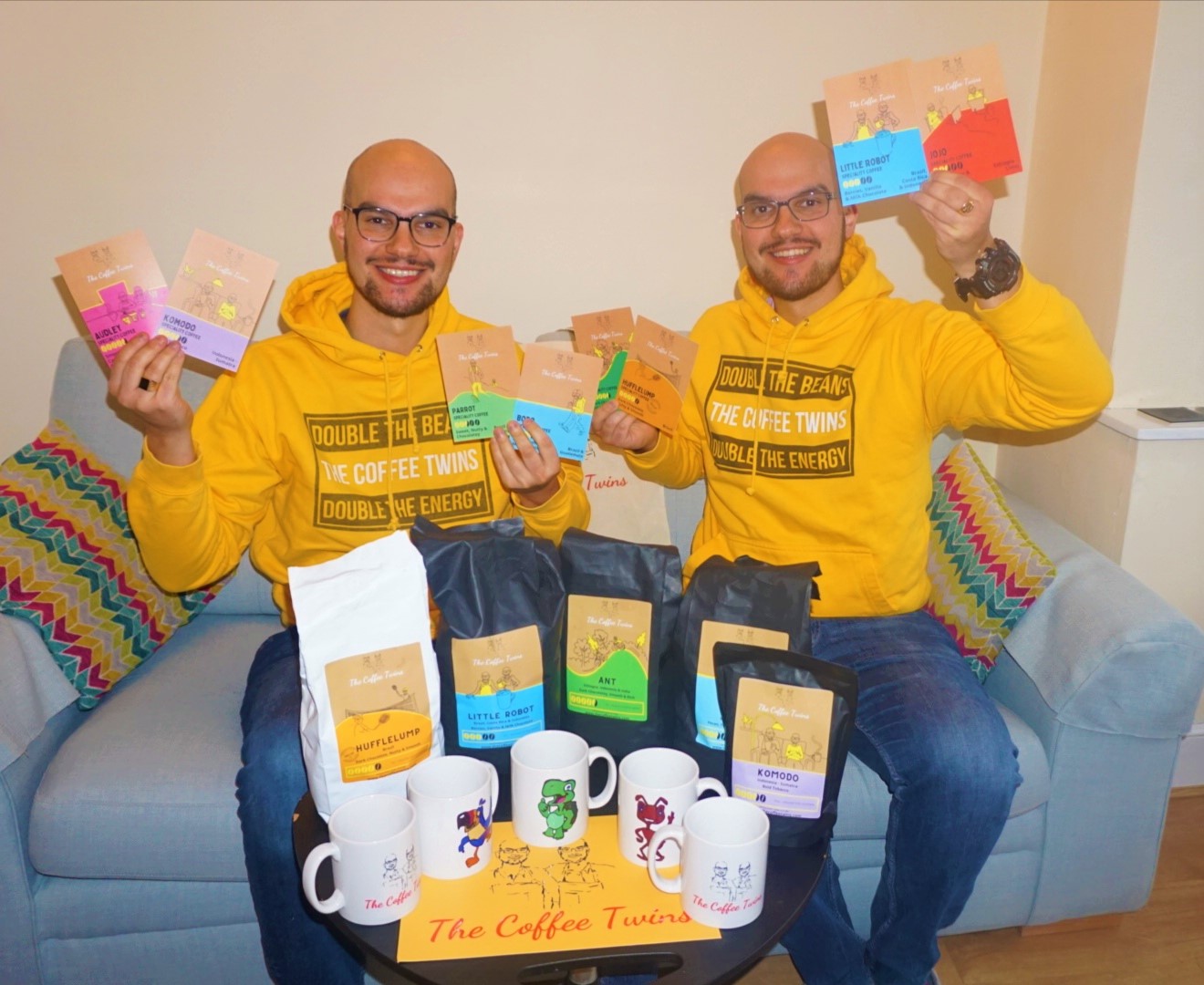
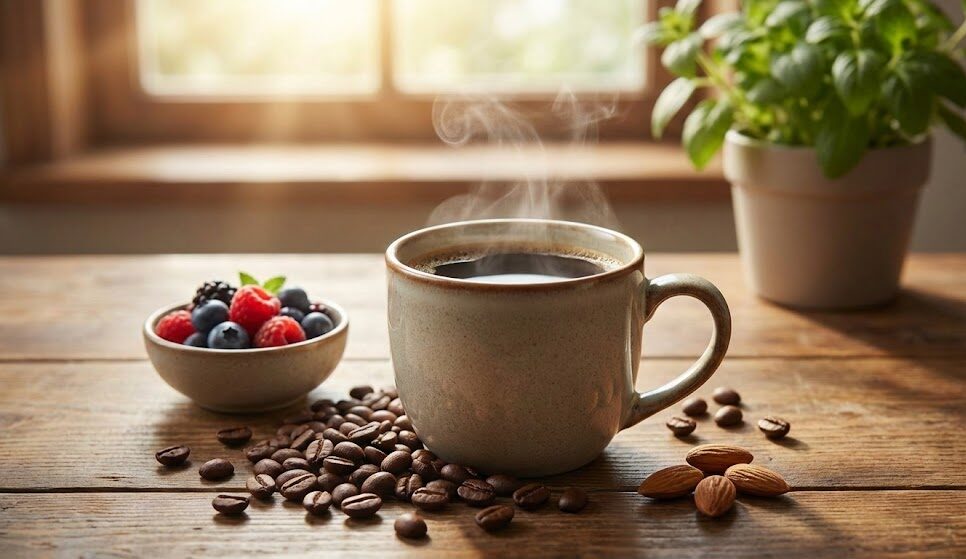
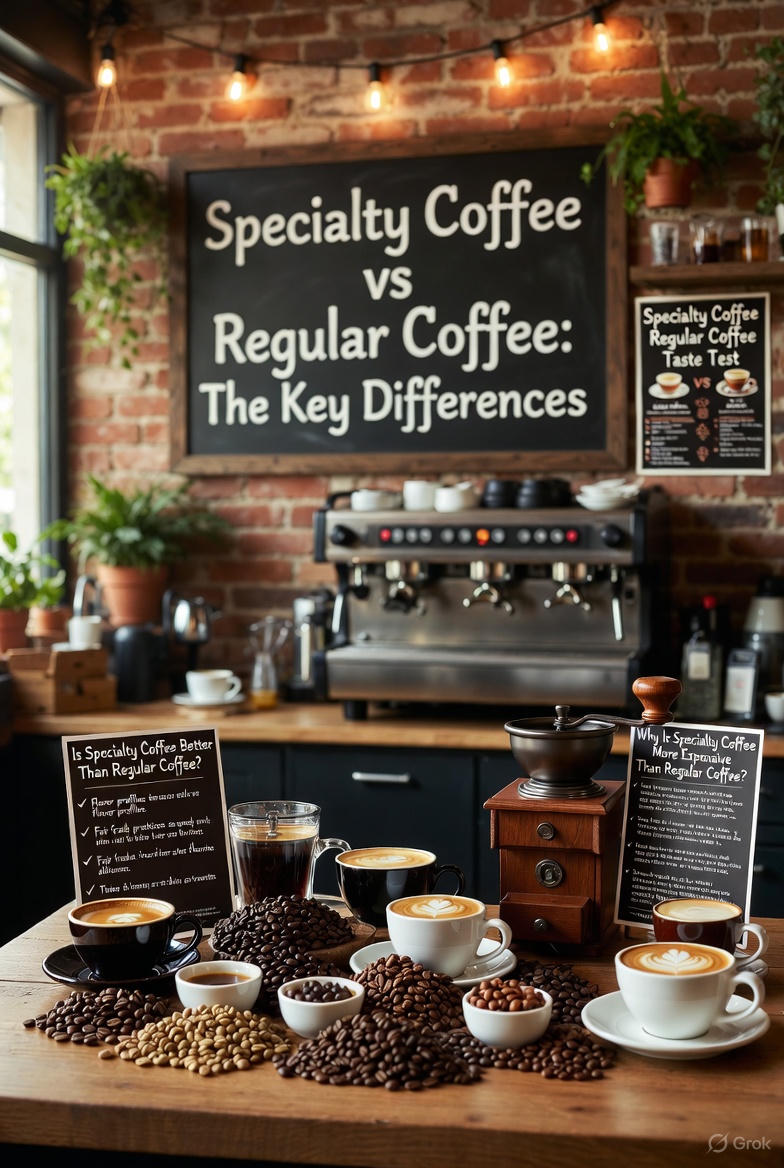

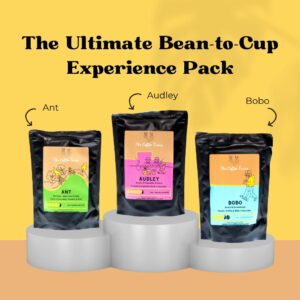
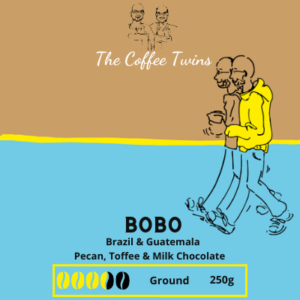
0 Comments